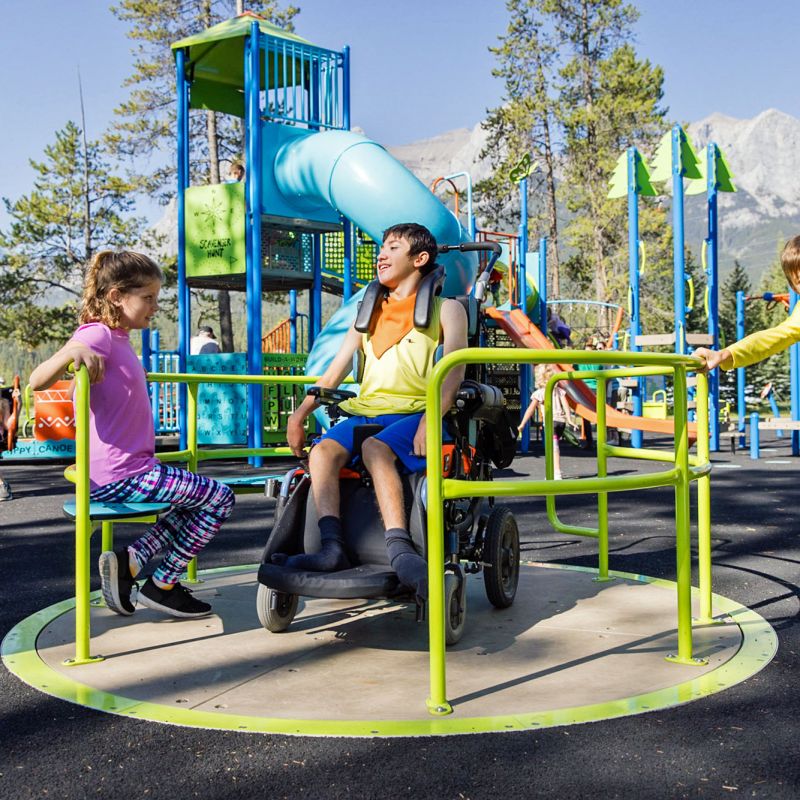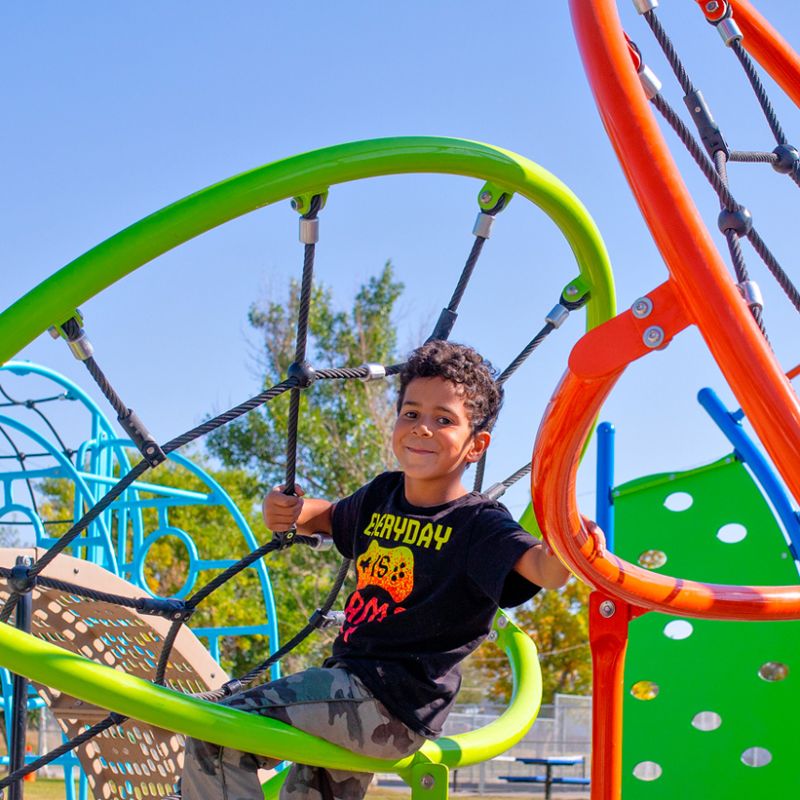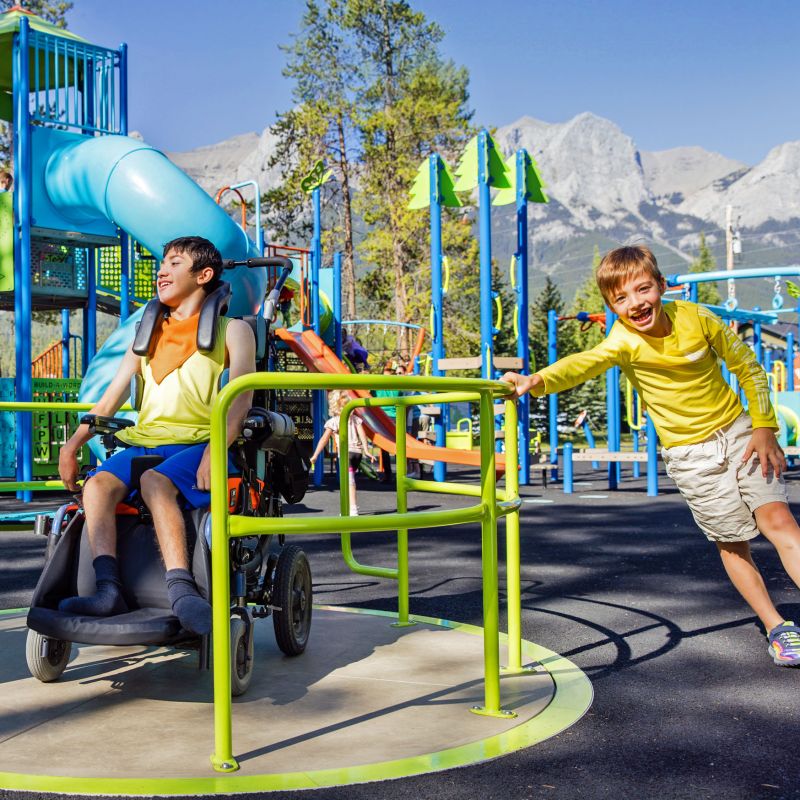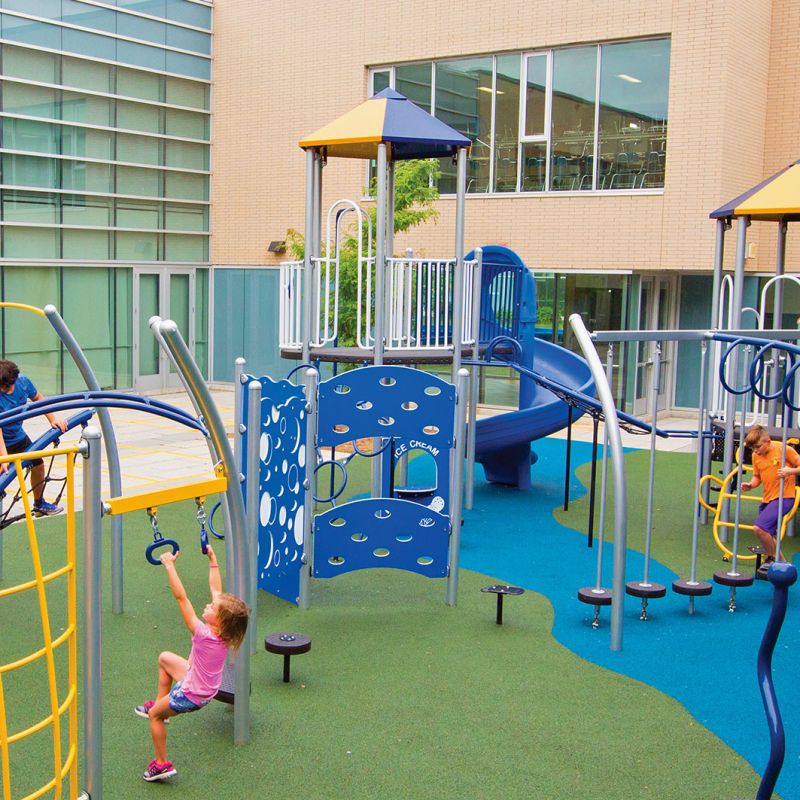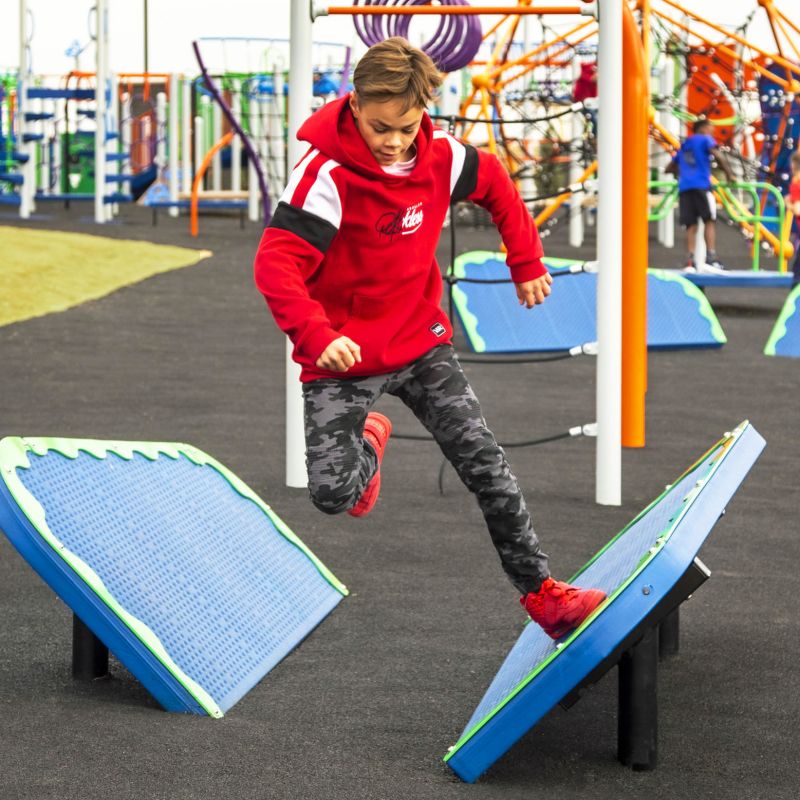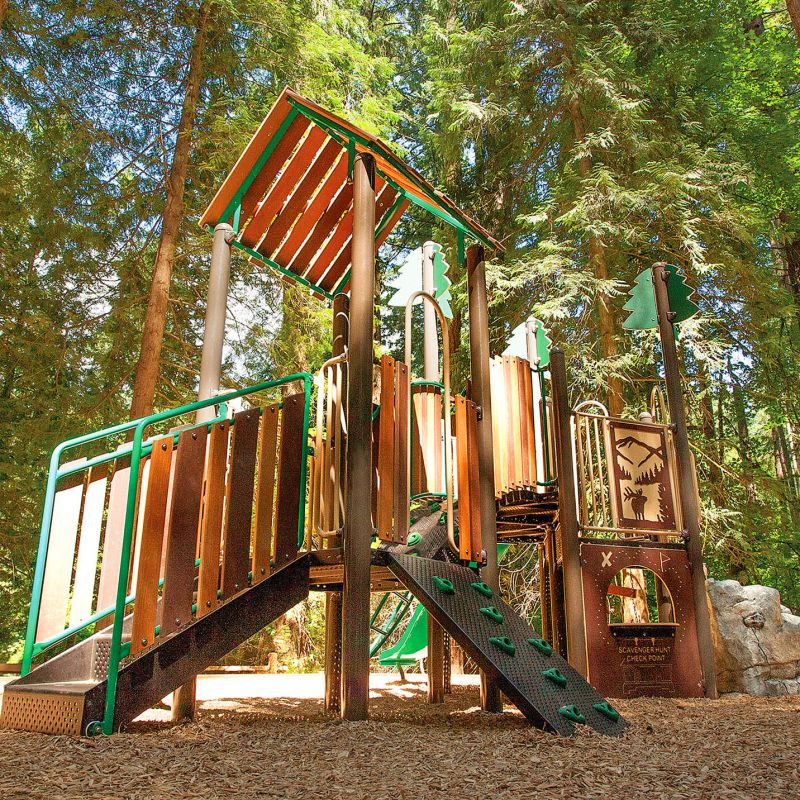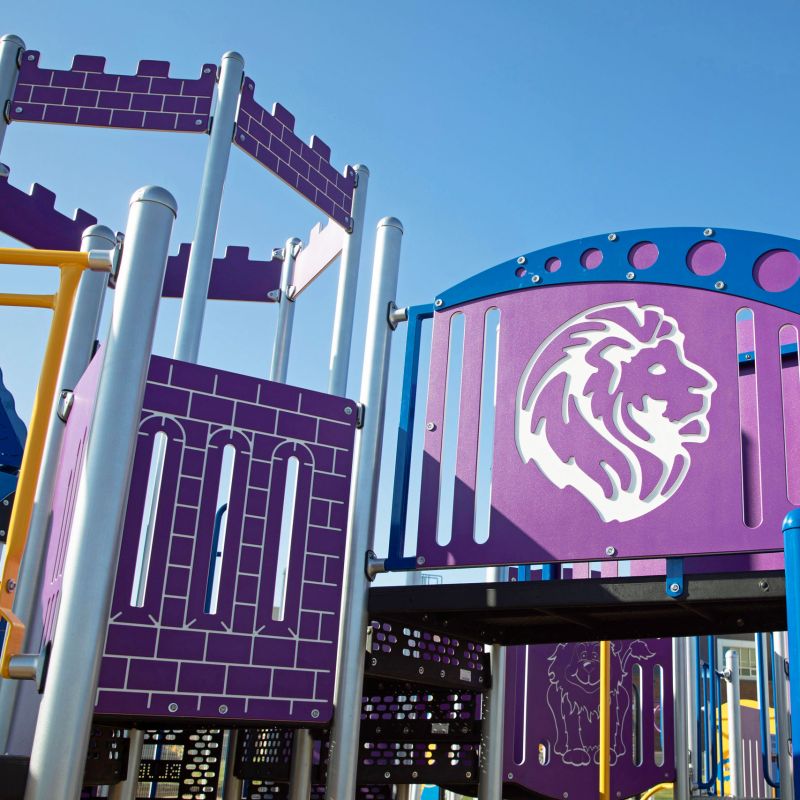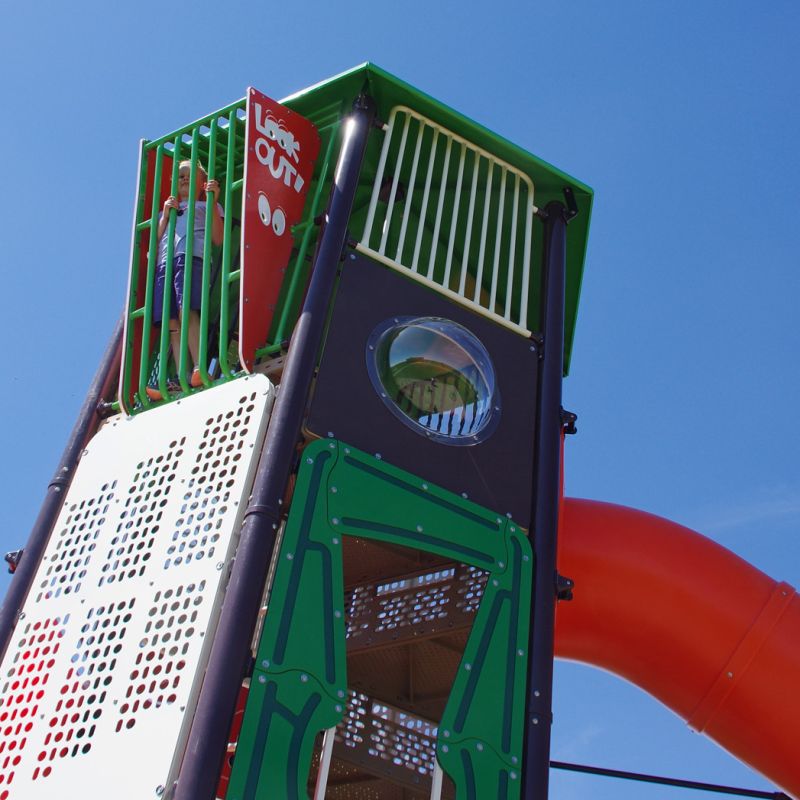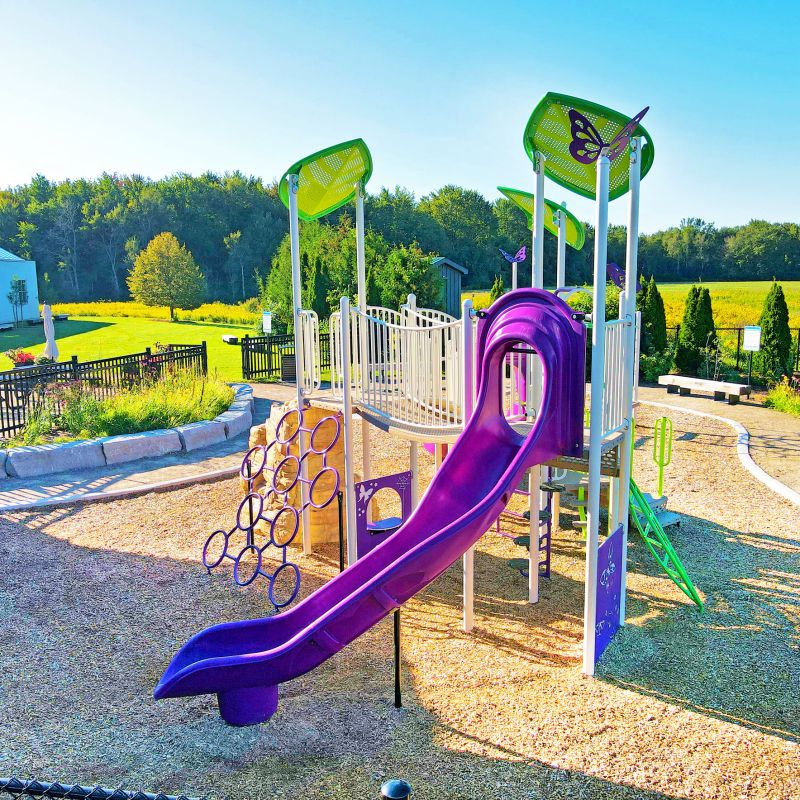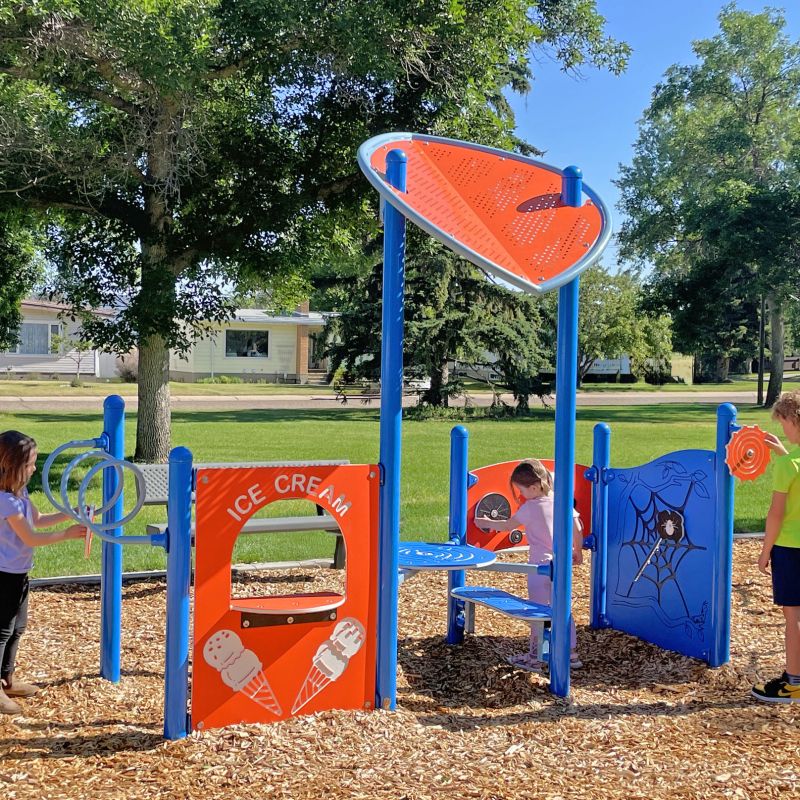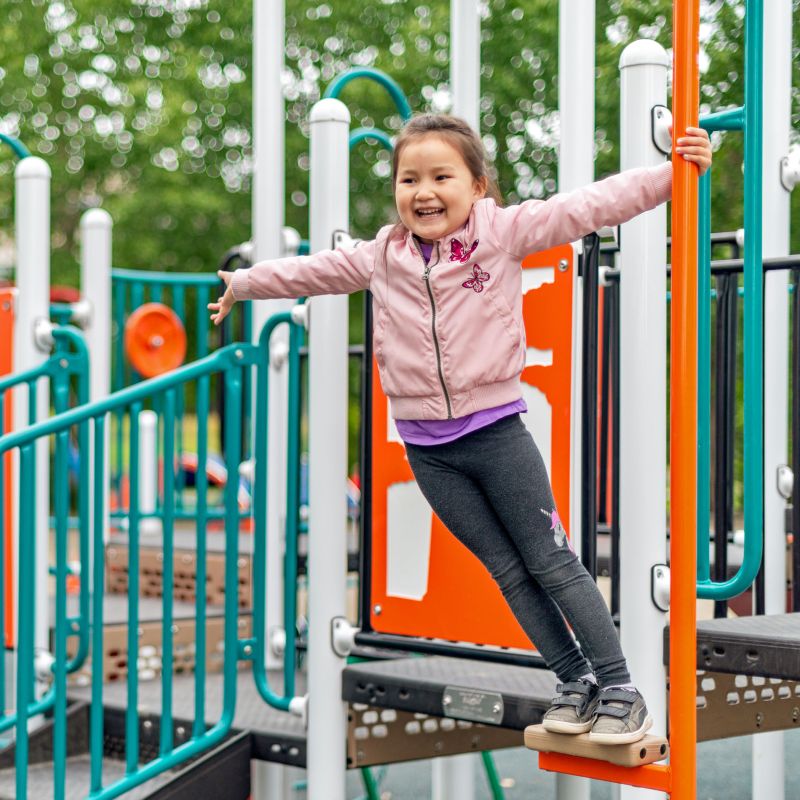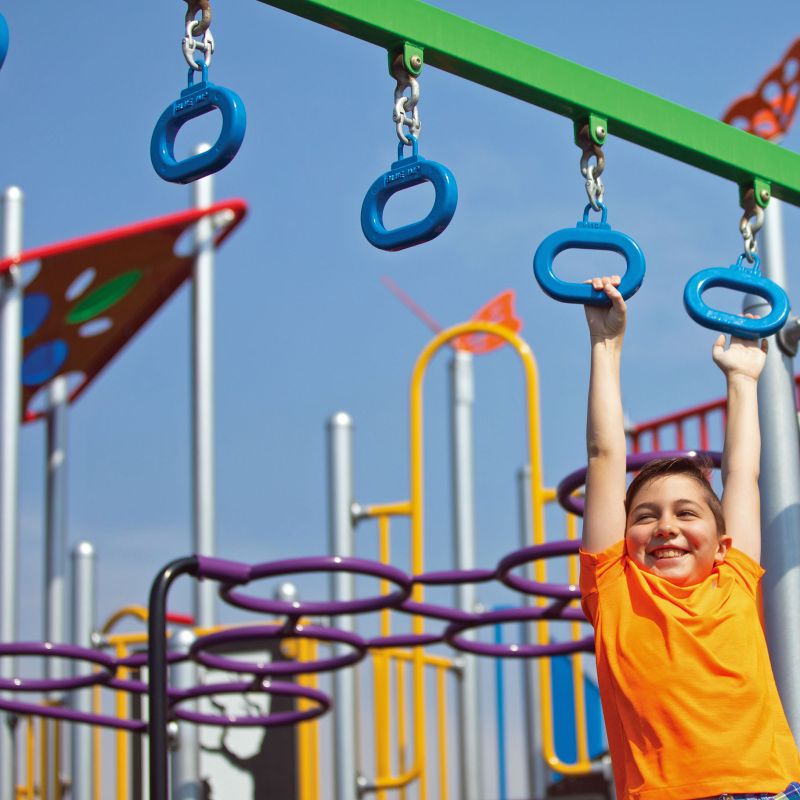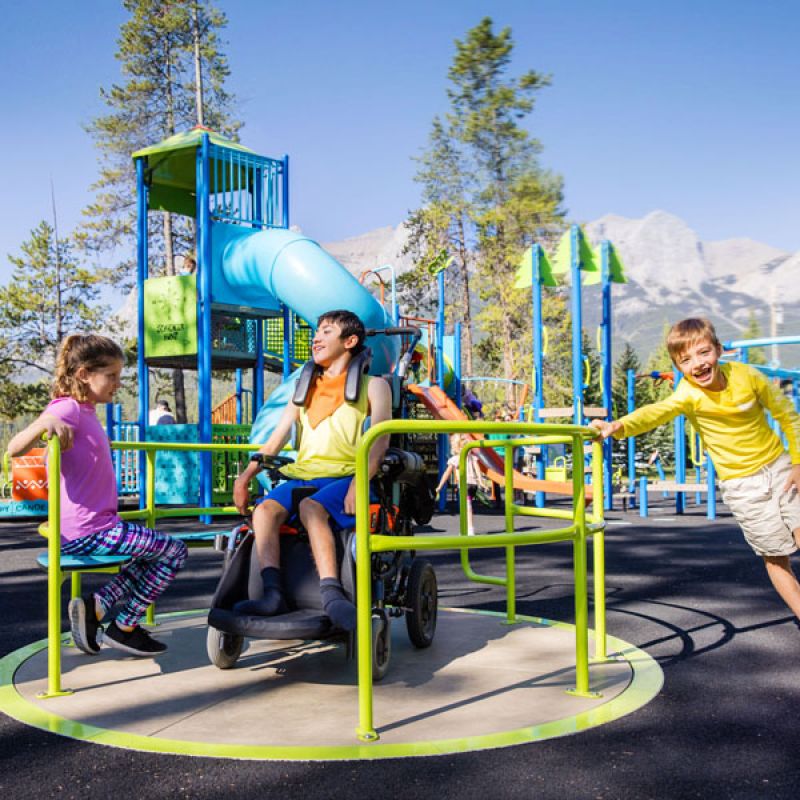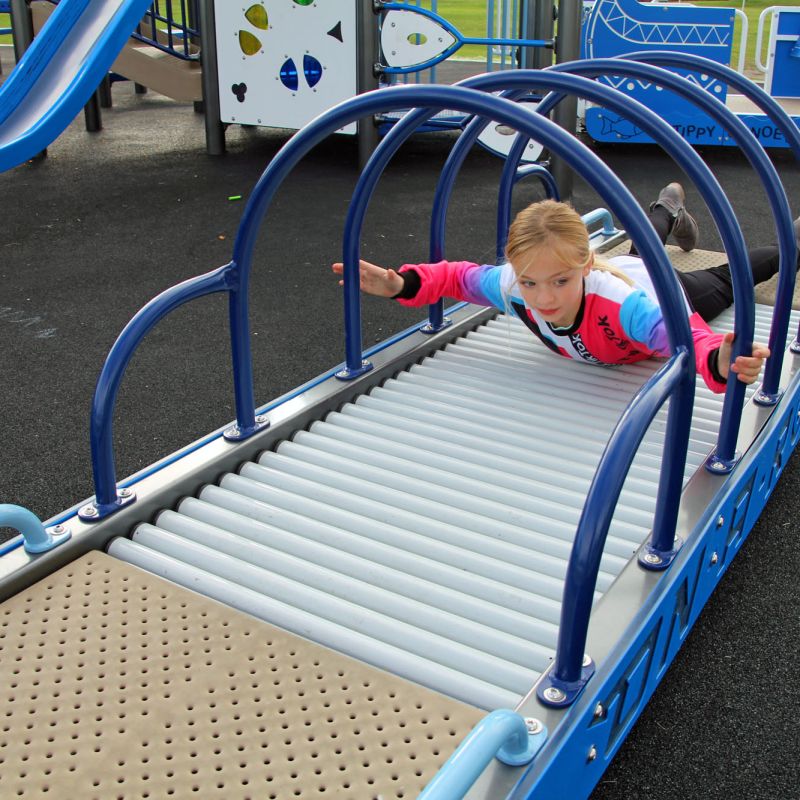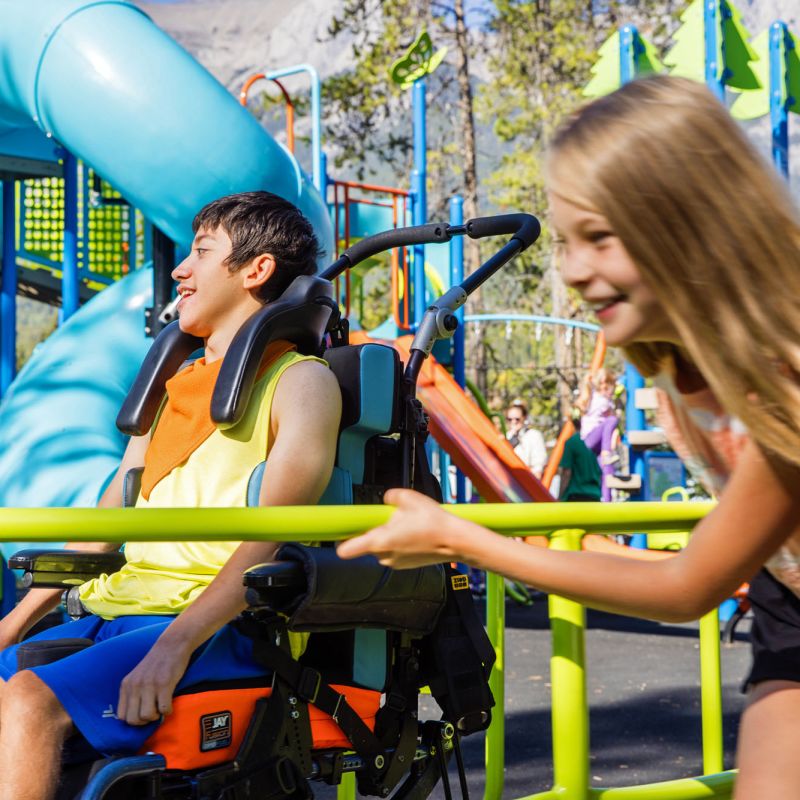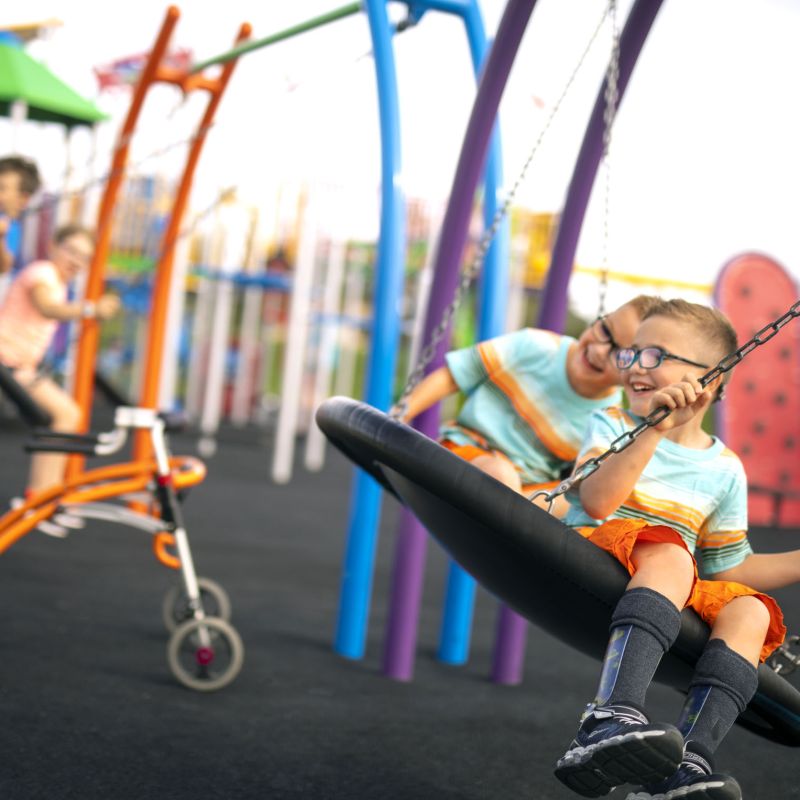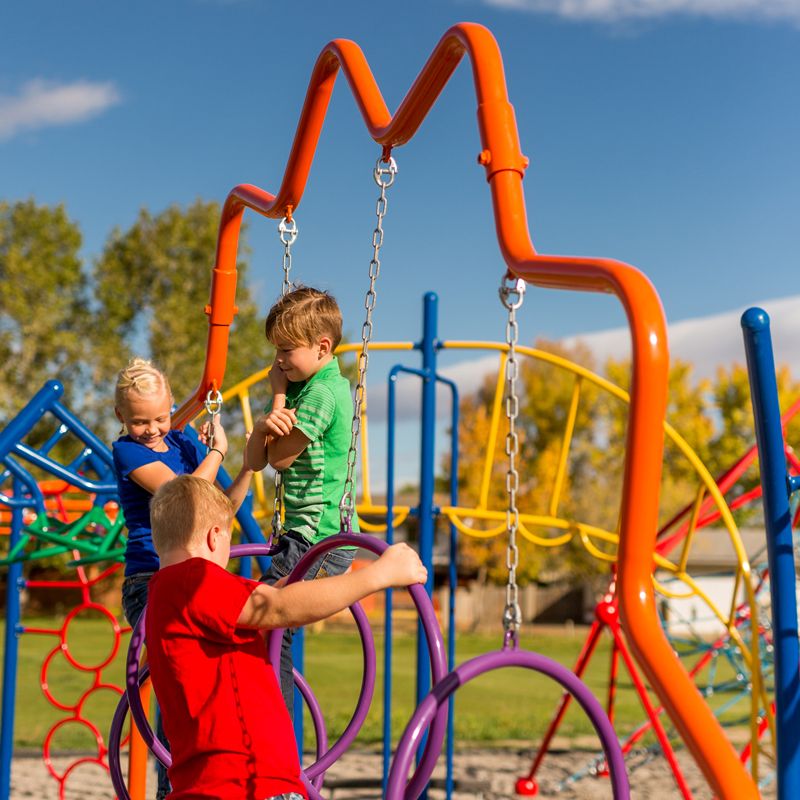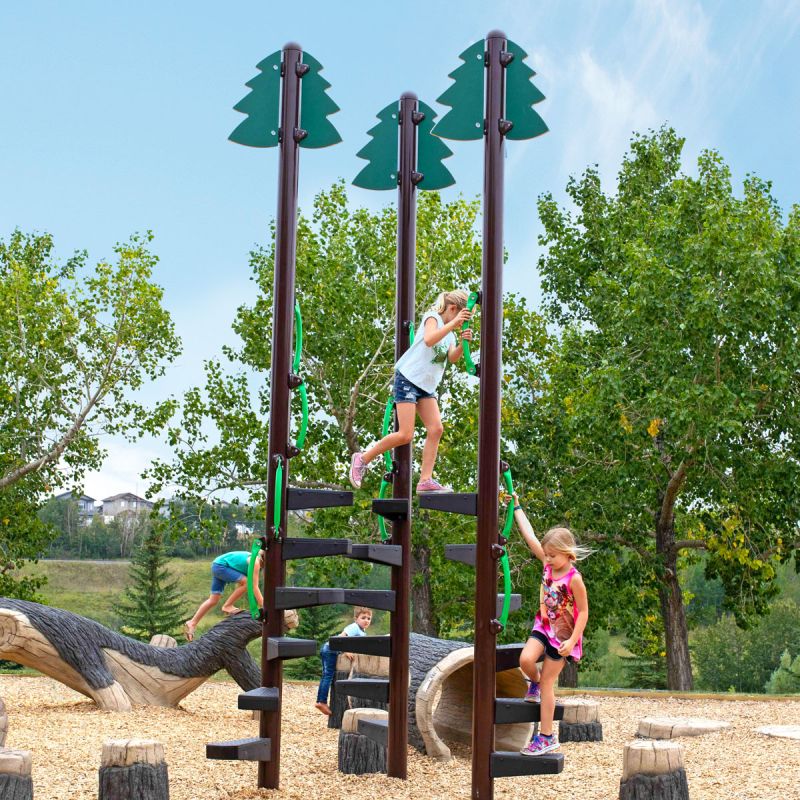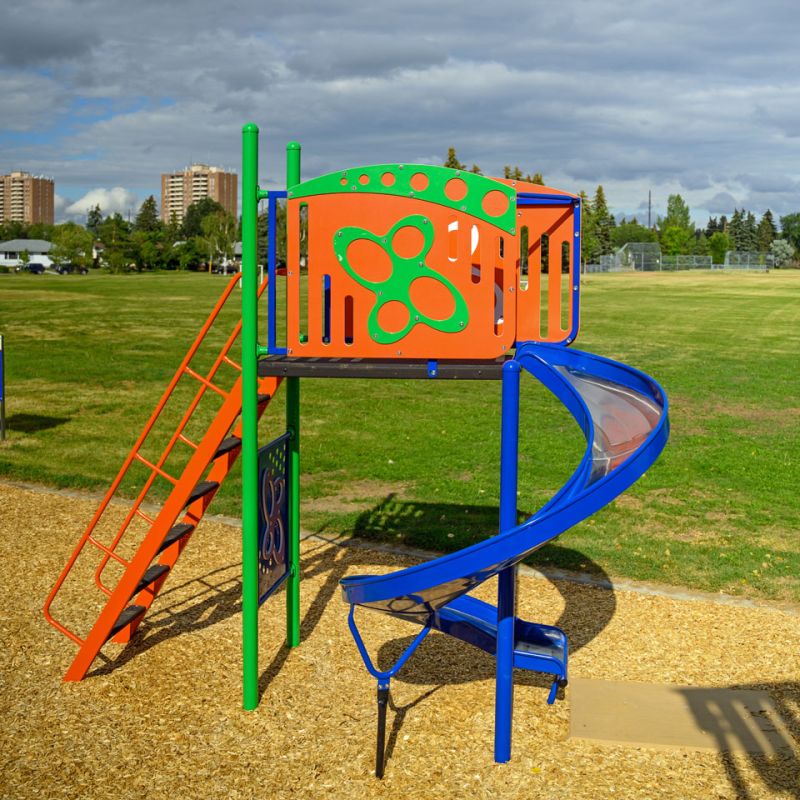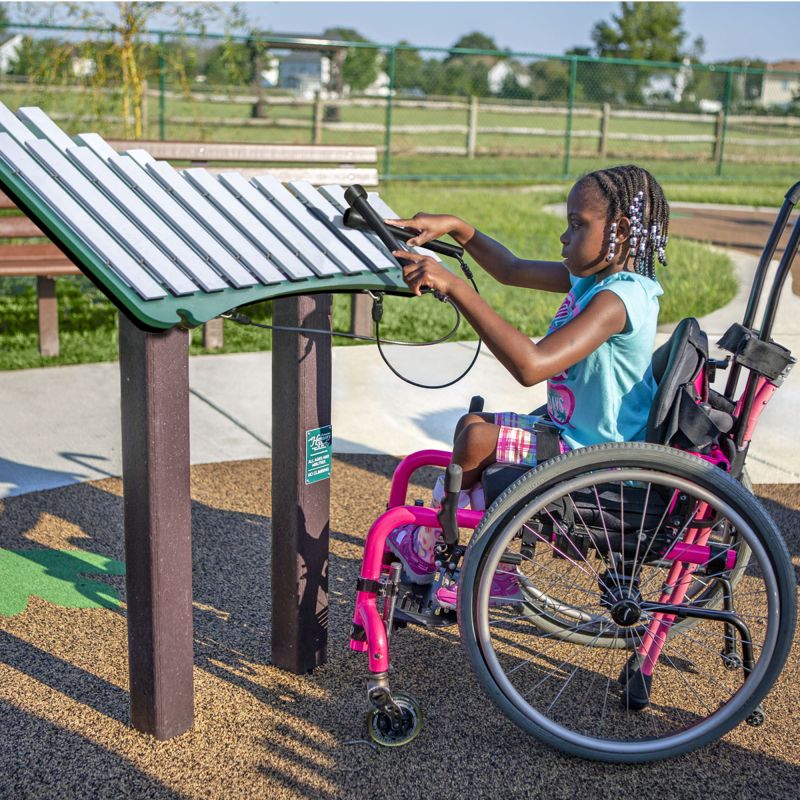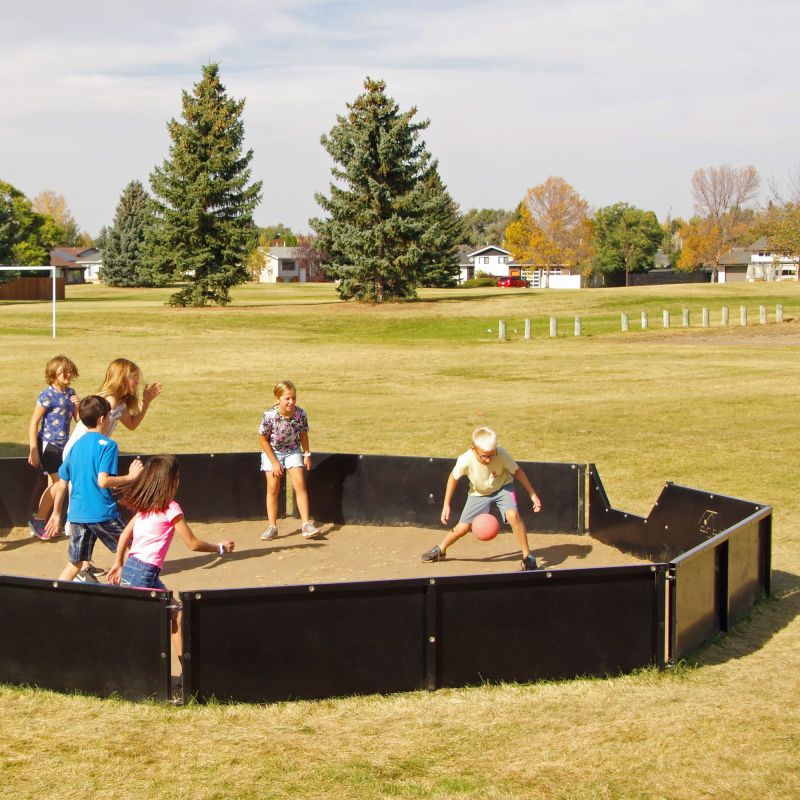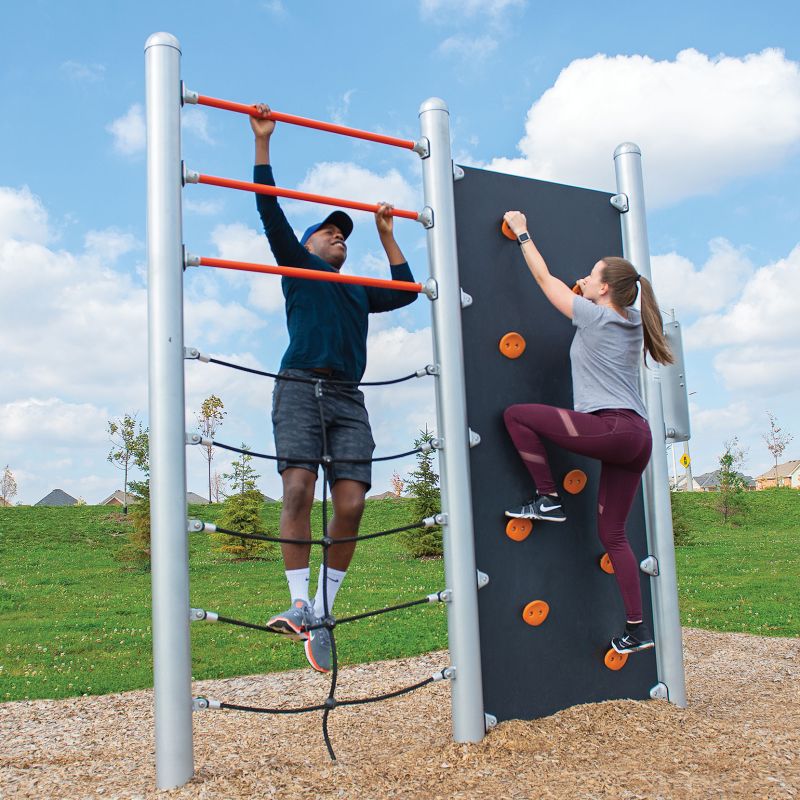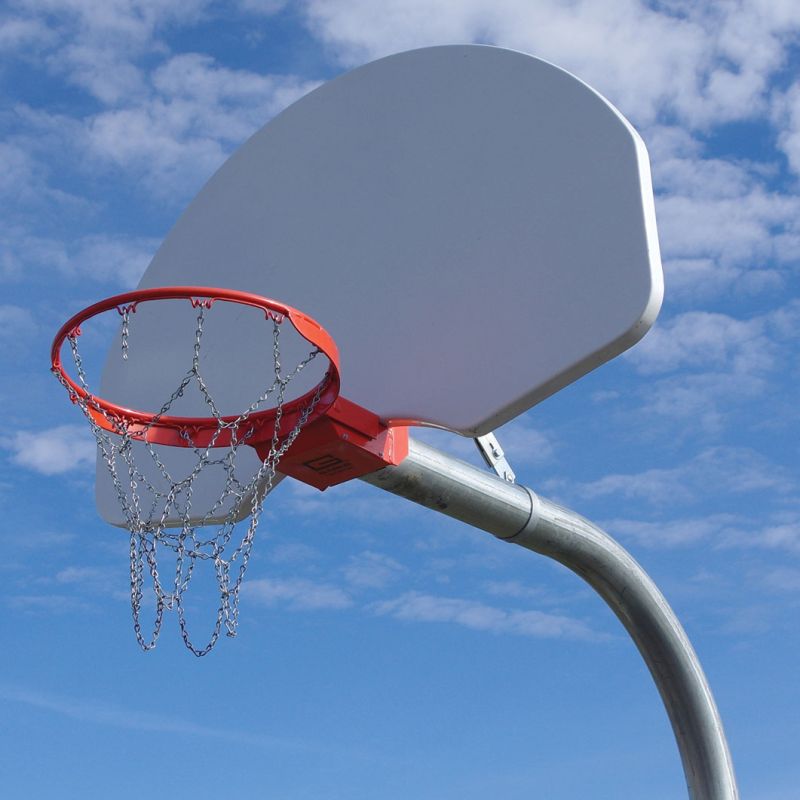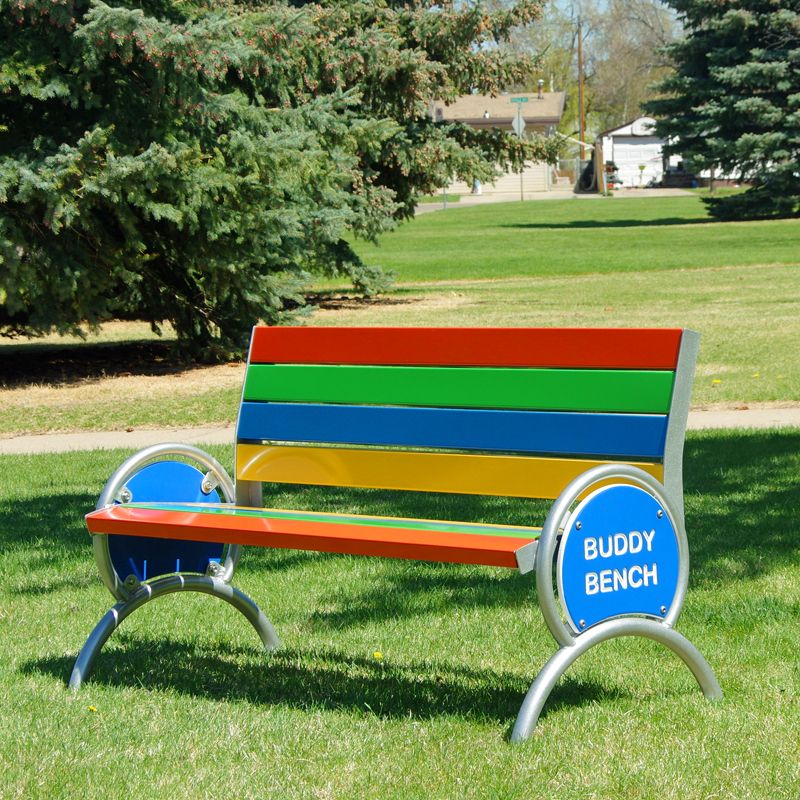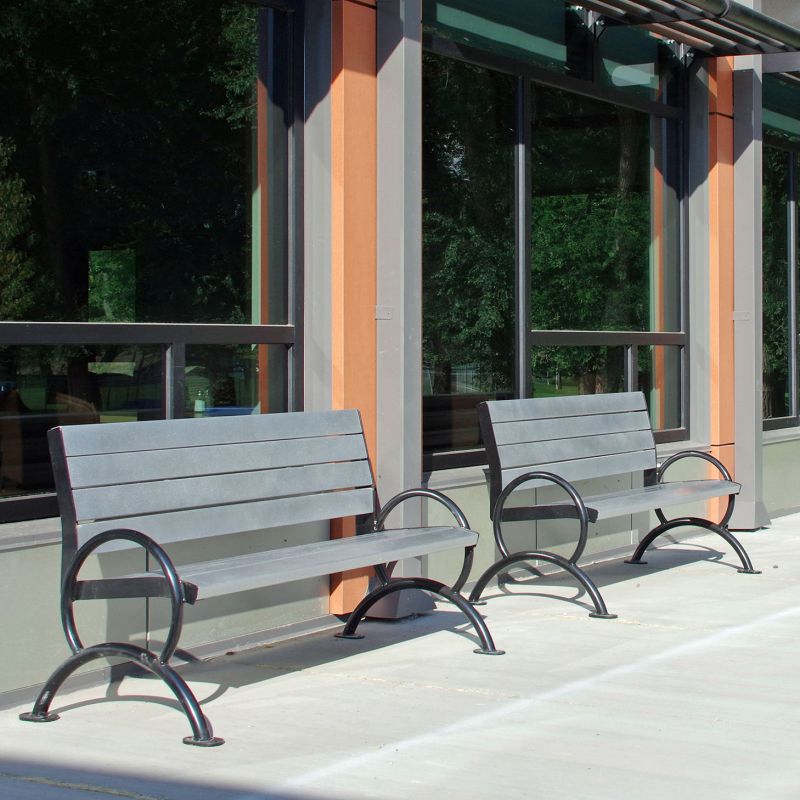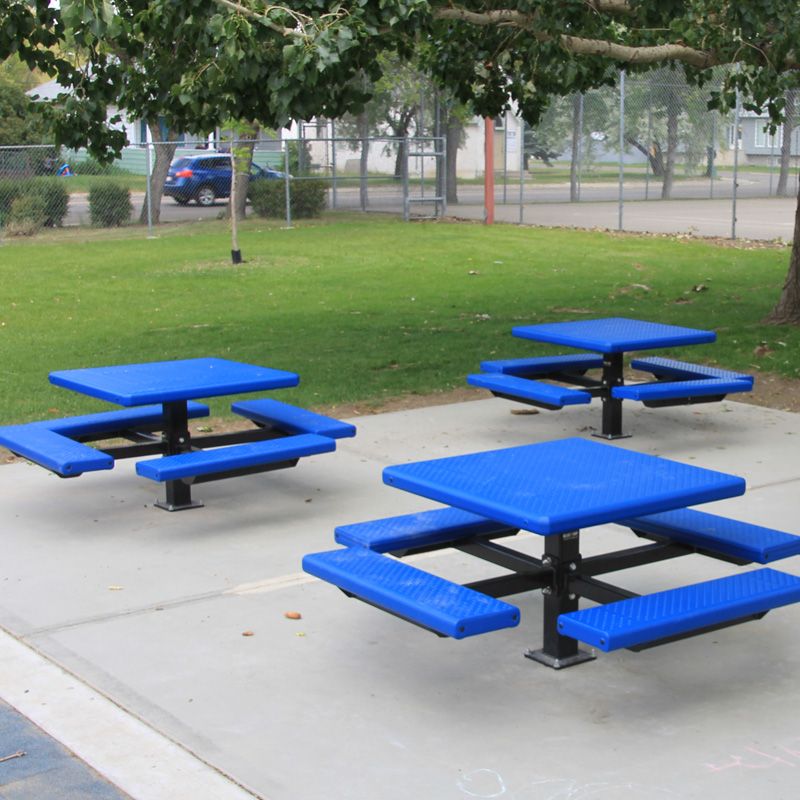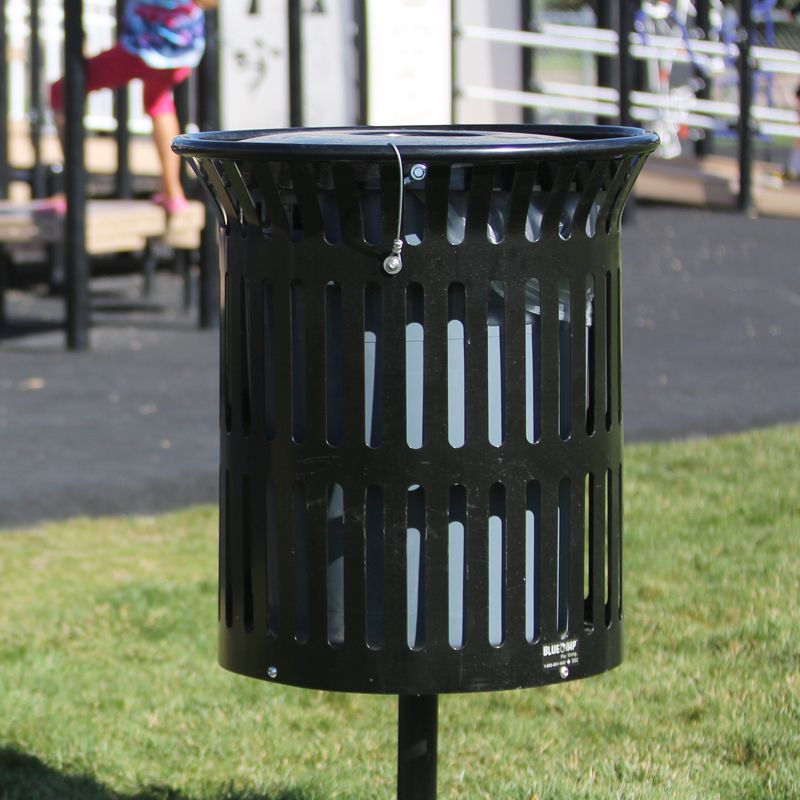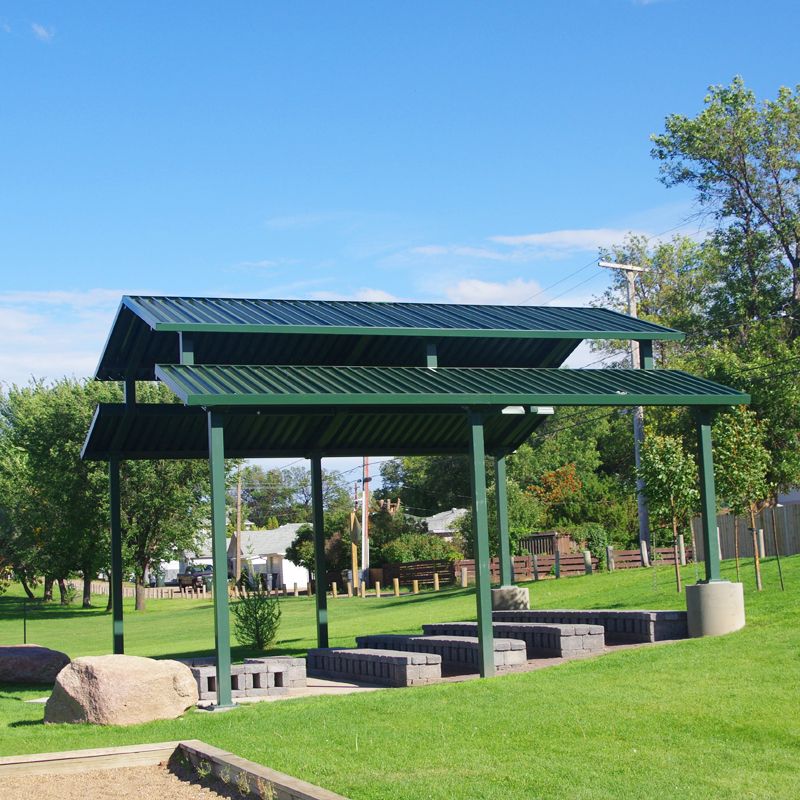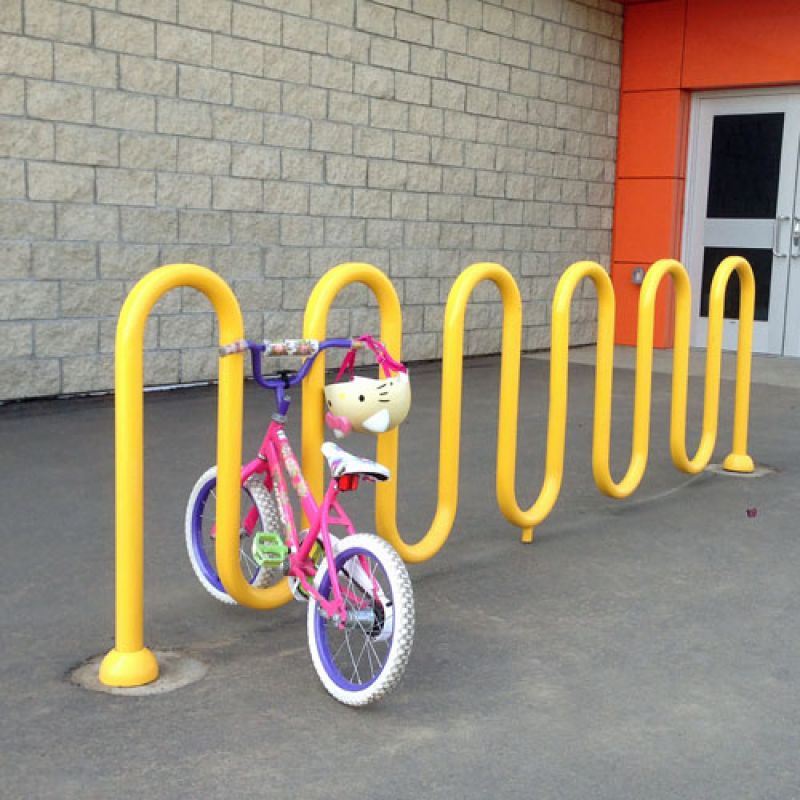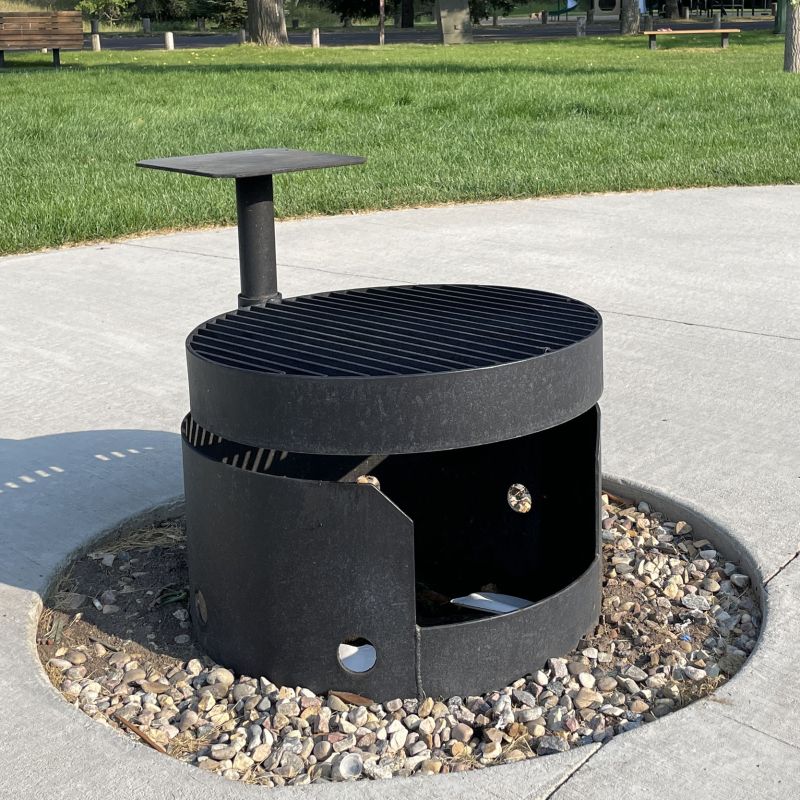Inclusive Playgrounds: An Overview
The goal of inclusive playgrounds is to include everyone! That means creating a multi-faceted, sensory-rich play space where families and children—regardless of abilities or disabilities, ages or stages, needs or preferences—can enjoy unstructured outdoor play together.
Inclusive play does not mean that every element of play is accessible to every child. It means incorporating a broad diversity of elements into the playground design—both ground level and elevated, physical play as well as sensory, imaginative, cognitive and social play—so that the combination of experiences is rewarding for each child. It’s about maximizing playability and enjoyment for as many users as possible.
Annex H: Canada’s Accessible Playground Guideline
As a Canadian playground manufacturer, Blue Imp adheres to CAN/CSA Z614 regulations governing Children’s Playspaces and Equipment as set out by the Standards Council of Canada: Where applicable, this includes Annex H, a non-mandatory set of guidelines for “playspaces and equipment that are accessible to persons with disabilities.” Canada’s Annex H guidelines are similar to those set out by the American Disabilities Act (ADA) which are often referenced in the playground industry.
Designing for Access & Mobility
Access is key to creating inclusive playgrounds. The goal is to ensure that both children and caregivers with mobility challenges can access and navigate the playground. A variety of design options can be implemented to achieve inclusivity for users with mobility challenges. These include:
- Creating accessible pathways and routes to and through the play space
- Installing surfacing that allows easy access and mobility (such as poured-in-place rubber, rubber tile or engineered wood fibre)
- Providing a diversity of ground-level play components and park furniture along an accessible route
- Creating a partially or fully-ramped structure enabling users in mobility devices to access elevated play components, and/or:
- Designing structures with a transfer station, combined with lower-profile accessible stairs so users with mobility challenges can access elevated play components
- Providing handrails and other mobility aids
Engaging All Abilities
Since mobility challenges account for only 14% of all disabilities in Canadian children, it is important to think beyond physical access. Inclusive playgrounds should engage all children including those with visual or hearing impairments, developmental delays, autism and other challenges. Here are a few examples:
- Stainless steel slides prevent damage to cochlear implants worn by hearing-impaired children
- Alternating deck colours on playground structures help visually-impaired users recognize changes in height
- Components that make sound or provide tactile play are enjoyable for users with visual impairments
- Components that rock or sway can be comforting to children on the autism spectrum
- Quiet zones provide calming activities for children who easily become over-stimulated
Incorporating Diversity
Incorporating diverse types of play is the best way to create rewarding play experiences for a wide range ages, stages and abilities. To learn more about the various types of play listed below, consult our “Understanding Types of Play” information sheet.
- Physical play
- Motion play
- Sensory-rich play
- Creative/cognitive play
- Quiet retreat play
- Social/interactive play
- Imaginative/pretend play
- Parallel play
Inclusive Playgrounds = Whole Community
A further aspect of inclusive playgrounds involves providing activities for the wider community, from teens to parents and grandparents. Some ideas include:
- A parkour-style agility circuit or outdoor fitness stations
- Seating areas featuring accessible tables and benches
- Games such as disc golf, Gaga ball, basketball goals, etc.
- Outdoor musical instruments to delight all ages and abilities
- Shelters and rest areas for families and community members to recreate
